Welcome to Doom9's Forum, THE in-place to be for everyone interested in DVD conversion. Before you start posting please read the forum rules. By posting to this forum you agree to abide by the rules. |
|
|
#31043 | Link |
|
Registered Developer
Join Date: Sep 2006
Posts: 9,140
|
So here comes an improved image comparison for super-xbr:
clown - downscaled with lanczos (?) - heavy ringing artifacts: unscaled original - - | - - super-xbr original AR - - | - - super-xbr no AR - - | - - super-xbr madVR AR clown - downscaled with bilinear (?) - no ringing artifacts: unscaled original - - | - - super-xbr original AR - - | - - super-xbr no AR - - | - - super-xbr madVR AR "original AR": This is a very strict AR algorithm written by Hyllian. It removes almost all ringing that isn't in the source. Sounds good, but sometimes ringing is helpful! "no AR": This is super-xbr without any AR. This adds noticeable ringing, of course. "madVR AR": This is a selective AR algorithm which tries to surpress unwanted ringing, while keeping helpful ringing. If you look at the 2nd set of images, you should see that both AR algorithms remove most of the ringing and that super-xbr itself doesn't really ring much at all if the source is clean. It *does* sharpen=increase ringing that is already in the source, though. You can also directly compare Hyllian's fast and agressive AR algorithm to the (slower and more complicated) one madVR uses. Hyllian's algorithm is better for comic style video games, but I believe mine's better for photos and movies. Thoughts? |
|
|

|
|
|
#31044 | Link | |
|
Registered Developer
Join Date: Sep 2006
Posts: 9,140
|
Quote:
 So I can replace the first call with the fixed coefficients, and should ideally replace the second call with a calculation, right? What meaning do "nb" and "w8" have in the second sinc call? Which of them is the "distance" I would usually use for such a cubic coefficient function? So I can replace the first call with the fixed coefficients, and should ideally replace the second call with a calculation, right? What meaning do "nb" and "w8" have in the second sinc call? Which of them is the "distance" I would usually use for such a cubic coefficient function?Who said anything like that? You may want to re-read my posts, starting with the v0.88.12 release post. |
|
|
|

|
|
|
#31047 | Link | |
|
Registered User
Join Date: Jun 2014
Posts: 42
|
Quote:
|
|
|
|

|
|
|
#31049 | Link | |||
|
Registered Developer
Join Date: Sep 2006
Posts: 9,140
|
Quote:
Quote:
Quote:
Nope, simple D3D9 HLSL pixel shaders. |
|||
|
|

|
|
|
#31050 | Link |
|
Registered User
Join Date: May 2009
Posts: 184
|
Great work madshi
 Need to do some proper IQ tests but first impression is that I do like being able to run the full suite of super-xbr options (luma and chroma doubling, plus chroma upscaling) with less than 8ms render times. |
|
|

|
|
|
#31051 | Link | |
|
Registered User
Join Date: Dec 2011
Posts: 1,812
|
That's great! So now AMD users now have good alternative to NNEDI3, combined with SuperRes.
Quote:
 ). ).
|
|
|
|

|
|
|
#31052 | Link |
|
Guest
Posts: n/a
|
I just compared the same clip in WMP vs. madVR and I have to say that without FineSharp or LumaSharpen madVR (best quality settings) does make the image so soft that some people may dislike it and prefer playback via WMP simply due to sharpness, especially if you sit close to your display. LumaSharpen changes that.
Have any tests shown whether LumaSharpen adds more ringing than FineSharp? |

|
|
|
#31053 | Link | |
|
Registered User
Join Date: Dec 2008
Posts: 496
|
Quote:
To your questions: 1) All my examples are done in image enhancements, under the processing tab (so before upscaling). This is because all the algorithms will be applied before upscaling, which shows me the differences a lot more clearly. 2) Regarding the thinning under upscaling refinement, I agree, lower strengths are also advantageous here, I would say thinning should be between 0.020 and 0.035, not higher. I definitely had some strange artefacts appear with a setting of 0.100 on my first samples I posted, therefore I would not recommend them. 3) Thanks for fixing the bug so fast, really appreciated. 4) Regarding your question, which image looks subjectively better, it's pretty clear for me and I invested quite a lot of time to be sure. I think if you take a look at my enhanced screenshots, you will agree. 5) The brightness you see is exactly what a sharpener does if you use way too high strengths, that's why I was absolutely against too high values. Like I wrote before, a good sharpener enhances fine details and by looking at your shots, no LL does exactly represent what I would expect, instead of masking and darkening the result. A sharpener should in an optimal case never do anything else than to sharpen. Your shots all look more accurate from a sharpener point if view with no LL, as do the squirrel shots. The other two examples you provided (the dark ones) are all masking the weird blackness mask that the LL enabled finesharp introduces. This is not the case with the no LL finesharp. The no LL finesharp is a lot more accurate even at higher strengths, so if we might settle on values like 0.5, 1.0 and 2.0, then I think everyone should be equally happy. I prefer mild sharpening, while others will like a higher setting, If you need further tests, I can do them, but I think when you look at the enhanced squirrel, you will see the heavy artefacting that I am speaking of. Last edited by iSunrise; 14th June 2015 at 22:48. |
|
|
|

|
|
|
#31054 | Link | |
|
Registered User
Join Date: Oct 2007
Posts: 92
|
Quote:
My "present queue" fill beyond 4 now. I set the present queue to 12 and I'm getting 11/12 in DSD11 FSE 10 bit mode. First time since v088.8  
|
|
|
|

|
|
|
#31055 | Link |
|
Registered User
Join Date: Feb 2014
Posts: 139
|
Super-xbr and some light superres (1 pass, .75 str, .3 sharp, .1, soft, .3 AA, 1.0 AR) works really quite well for 720p. The superres seems to help clean up some artifacts when stripes (like on skyscrapers) are upscaled by super-xbr.
Can't wait to test the version with madshi's AR filter. |
|
|

|
|
|
#31056 | Link |
|
Registered User
Join Date: Jun 2005
Posts: 504
|
I doubt that SuperRes's sharpness enhance would be needed if Super-xbr used. Here's what I am using for 576p: 2pass, 0.65 str, 0.0 sharp, 0.2 soft, 0.25 AA, 0.75 AR.
Edit: With both sharpness and softness set to 0, it seems more passes won't hurt too much of the quality. I just tested with pass 8, and the quality didn't is quite good to my eyes. Last edited by Anima123; 14th June 2015 at 23:36. |
|
|

|
|
|
#31057 | Link | |
|
Registered User
Join Date: Aug 2004
Location: Canada
Posts: 860
|
Quote:
http://madvr.com/doom9/clown/clownSuperXBR.png Last edited by JarrettH; 14th June 2015 at 23:57. |
|
|
|

|
|
|
#31059 | Link | |
|
Troubleshooter
Join Date: Feb 2014
Posts: 339
|
Quote:
I think those settings work just as well when paired with super-xbr for image doubling. NEDI was my previous image doubling choice (NNEDI3 was far to much of a resource waste and generated too high render stats for what it gives comapared to NEDI in my mind), but now I find I like the sharpness of the super-xbr better. On the 720p video I tested NEDI runs at ~11.5ms while super-xbr runs at ~15.7ms, and for 480p 6.4ms (NEDI) and 8.5ms (super-xbr).
__________________
System specs: Sager NP9150 SE with i7-3630QM 2.40GHz, 16 GB RAM, 64-bit Windows 10 Pro, NVidia GTX 680M/Intel 4000 HD optimus dual GPU system. Video viewed on LG notebook screen and LG 3D passive TV. Last edited by Anime Viewer; 15th June 2015 at 00:35. |
|
|
|

|
|
|
#31060 | Link |
|
Registered User
Join Date: Dec 2011
Posts: 1,812
|
Seems like super-xbr looks nice for chroma scaling.
Jinc3AR: 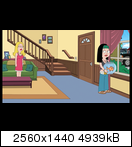 super-xbr:  NNEDI3 256:  Luma scaling was NNEDI 256 doubling for all three examples (and will be for the following if not stated otherwise). Regarding sharpening (image enhancement): FS seems to thicken and darken contoures, I don't like this artificial look for cartoons. Lumasharpen is brighter, but this can be reduced by lowering clamp value (e.g. to 0.02). FS (1;0): 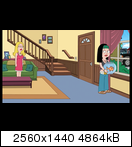 LS (1;0.035;1): 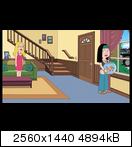 No sharpening: 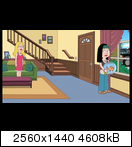 LS (0.8;0.02;1): 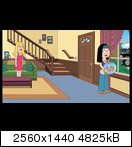 Will talk about luma scaling in the next post. |
|
|

|
 |
| Tags |
| direct compute, dithering, error diffusion, madvr, ngu, nnedi3, quality, renderer, scaling, uhd upscaling, upsampling |
|
|